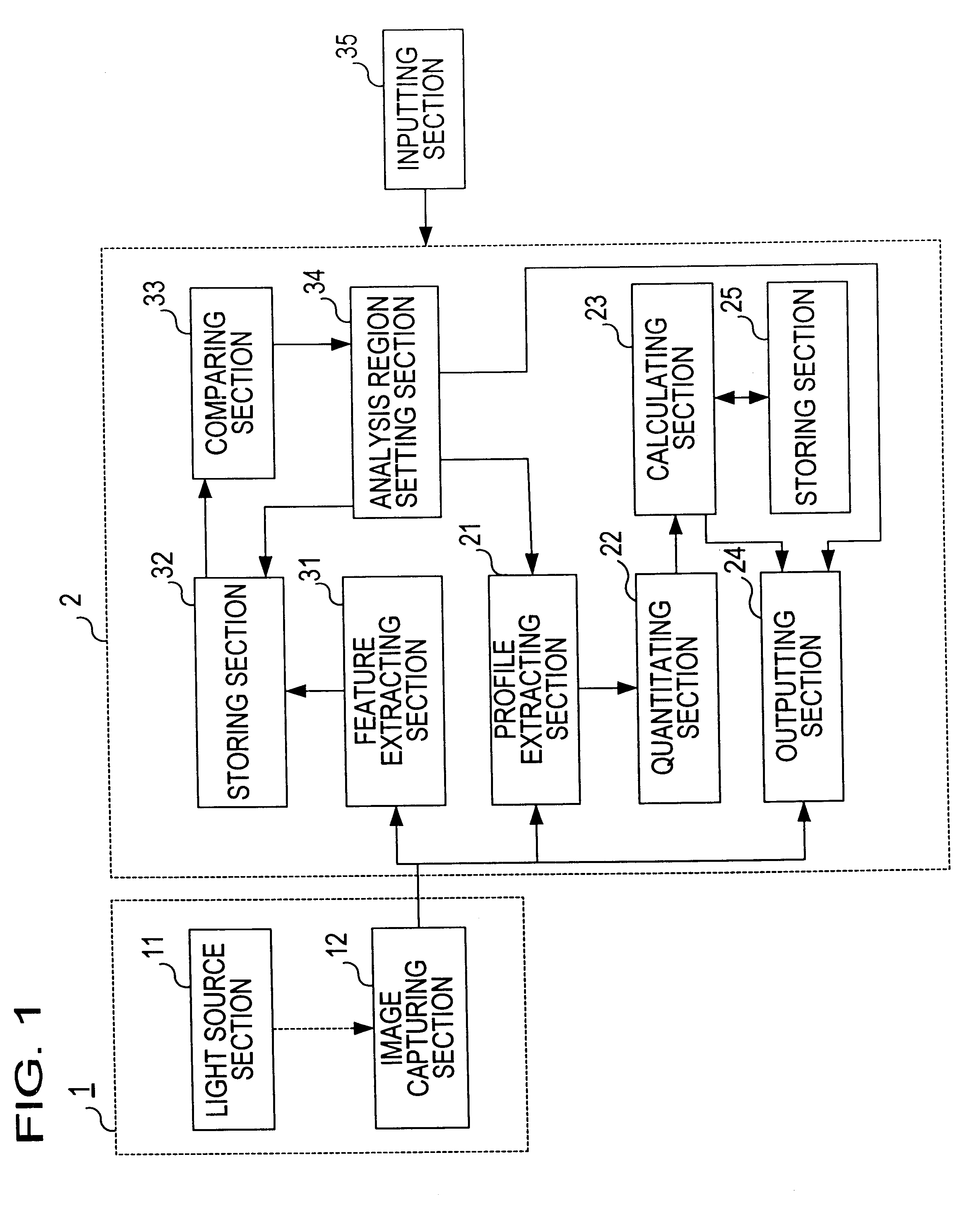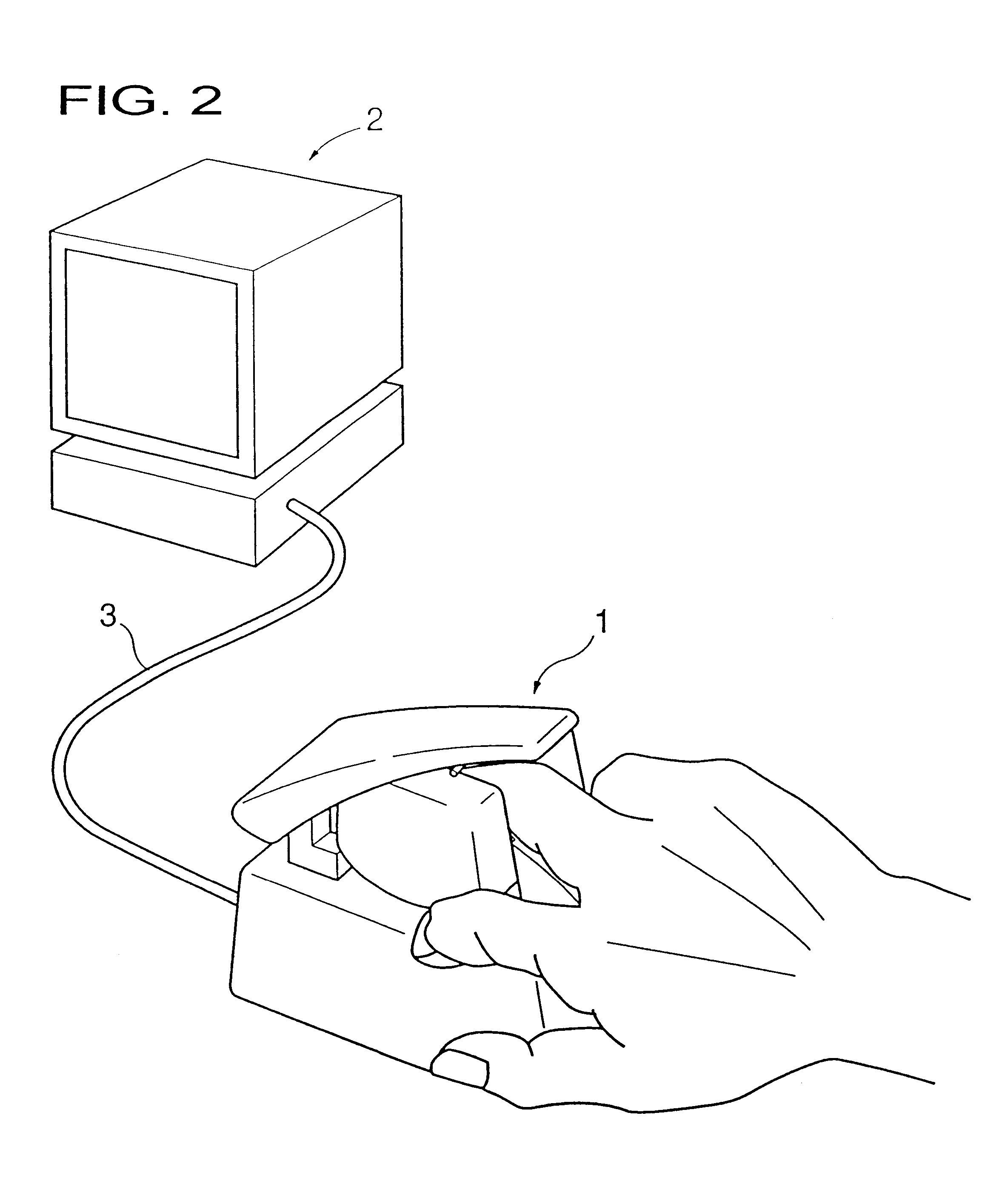Living body inspecting apparatus and noninvasive blood analyzer using the same
- Summary
- Abstract
- Description
- Claims
- Application Information
AI Technical Summary
Problems solved by technology
Method used
Image
Examples
first embodiment
FIG. 1 is a block diagram showing a construction of a non-invasive blood analyzer employing an apparatus for living body inspection of the present invention. Referring to FIG. 1, a detecting section 1 serving as the apparatus for living body inspection is provided with a light source section 11 for irradiating a portion of the living body (a middle finger of a hand of a human being in this case) including a blood vessel and an image capturing section 12 for capturing an optical image (image of transmitted light in this case) of the irradiated portion of the living body. In other words, the detecting section 1 in this case is an apparatus for capturing an image of the living body.
An analyzing section 2 is provided with a feature extracting section 31 for extracting a positional feature of a portion of the living body (coordinates of a recess in an outline of a joint portion of a finger in this case) in each captured image when the image capturing section 12 captures an image of the p...
second embodiment
FIG. 21 is a perspective view showing a detecting section 101 according to a second embodiment of the present invention. In this embodiment, the construction of the detecting section 1 of the first embodiment has been modified and the other constructions are substantially the same as in the first embodiment.
FIGS. 22 to 27 are a left side view, a plan view, a front view, a rear view, a bottom view, and a longitudinal cross-sectional view, respectively showing the detecting section 101. Here, a right side view is symmetrical to the left side view, so that the right side view is not shown here.
FIG. 28 is a side view showing the detecting section 101 with an essential portion exposed. FIG. 29 is a crosssectional view taken along the line W--W of FIG. 28. FIGS. 30 and 31 are explanatory views showing an operation of the essential portion.
This embodiment is designed such that the whole hand (the palm, the thumb, and the fingers of the hand) can be stably mounted and measured without strai...
third embodiment
FIG. 32 is a block diagram showing a construction of a third embodiment of a detecting section and an analyzing section of the present invention. Referring to FIG. 32, the analyzing section 2a includes a judging section 26 and a light quantity controlling section 27 in addition to the elements in the analyzing section 2 (FIG. 1) of the first embodiment. Besides the added elements, like numerals denote like elements shown in FIG. 1.
In the case where a finger (middle finger) of a human hand is an object of detection as a part of a living body in the same manner as in the first and second embodiments, it is preferable that the analysis region R1 (FIG. 14) is set at a joint portion or its neighborhood because, at the joint portion, a blood vessel is present near the surface of the skin and it is easy to capture an image.
For that purpose, in this embodiment, a preliminary step is conducted before carrying out the measurement work (FIG. 12) of the first or second embodiment. Namely, the j...
PUM
 Login to View More
Login to View More Abstract
Description
Claims
Application Information
 Login to View More
Login to View More - R&D
- Intellectual Property
- Life Sciences
- Materials
- Tech Scout
- Unparalleled Data Quality
- Higher Quality Content
- 60% Fewer Hallucinations
Browse by: Latest US Patents, China's latest patents, Technical Efficacy Thesaurus, Application Domain, Technology Topic, Popular Technical Reports.
© 2025 PatSnap. All rights reserved.Legal|Privacy policy|Modern Slavery Act Transparency Statement|Sitemap|About US| Contact US: help@patsnap.com



